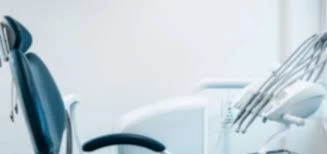Modern Standards for Effective Dental Practice
In this article, some mandatory steps are given to ensure the efficiency and preparedness of a dental practice up to the high-quality, health-care standards. Either if you are willing to own a new practice or to renovate your current one, you need to fully address the current trends in dental providers’ offices:
- Location: it is important to identify the geographical area of your interest; you might be looking to run your practice in a large area with different demographics or smaller area with more specific population.
- Dental Units/Chairs: the number of chairs can indicate how an office will grow and expand and what are the potential returns.
- Forms of Payment: you need to get specific about which kind of payment you will accept; you can choose from or mix between FFS, PPO, insurance, Medicaid and capitation and analyzing these methods, based on previous experiences or feedback from colleagues will be so beneficial.
- Purchasing costs: it is important to consider the current gross and to determine the future return on such investment; these costs include rental or owning a practice which need long-term financial plans.
- Investor: there are many options to get financial help at the initial stage through an investor, loaner or lender; it is useful to seek for hands-on loaner who is experienced in this field and can give guidance about dental market
- Legal Help: it sounds like a good idea to find a transaction lawyer prior to the purchasing process; a legal specialist needs to have a similar experience in health care and good rapport.
- Financial Help: an accountant might be required right away for evaluating the sale.
- Clinical Teamwork: having the right team of hygienists, nurses and front desk officers will help to run the practice with minimal mistakes and offer high-quality standards.
*Medical Emergency:
In addition to all the above-mentioned requirements, there is a great demand to establish a dental office with standards of medical emergency. There is currently a rise in death rates inside dental practices and several social media alerts. A dental office must be well equipped to provide proper sedation and anesthesia based on educational needs and physical issues related to dental treatment.
The key point of medical emergency is training dentists and other staff members on standard response plans, emergency medication/equipment. Another key element with regards to emergency standards in dental offices is running continuous inspections to check the critical areas of emergency readiness; such inspections can be made by third-party organizations to ensure nationwide, ethically responsible emergency standards.

There are several educational courses that can help health-care providers to complete their work in high safety standards such as basic life support (BLS), American Heart Association (AHA), American Red Cross, cardiovascular life support (ACLS) and pediatric advanced life support (PALS) courses. A dentist who does dental procedures under sedation general anesthesia should also align with the required anesthetic dosageand frequency indicated by the American Society of Anesthesiologists (ASA) classification which is dependent on BMI and health status: ASA I= normal; ASA II= mild-to-moderate systemic disease without limited functionality (e.g., diabetes mellitus and hypertension); ASA III= severe systemic disease with limited functionality (e.g., uncontrolled diabetes or hypertension); ASA IV= severe life-threatening disease (e.g., congestive heart failure and heart dysfunction); ASA V= moribund, fatal condition (e.g., ruptured aortic abdominal aneurysm or pulmonary embolus).

